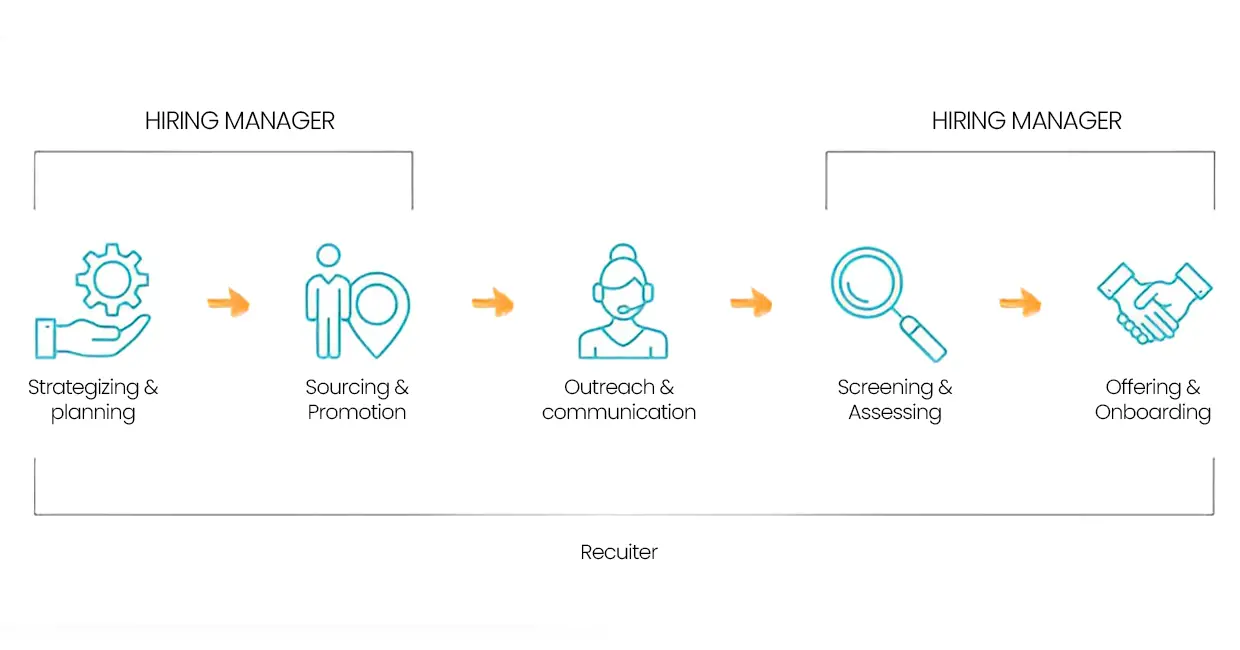Divij Chadha
A comprehensive business plan covers various imperative decisions taken by the management which do invite positive or negative consequences, boom, or bust. Such decisions, when taken establish the present plan of action and attempt to secure the anticipated future state of affairs in regards to business trade. Great decisions are a result of a balanced team of administration, employers, and members of the workforce. Obtaining the right people at the right time is what recruiting is all about. Recruitment comprises identifying the right talent, attracting them with promising opportunities, screening them as per the requirements, shortlisting them on the basis of their qualifications, and lastly interviewing them to enroll them in the organization.
A prudent recruitment program assures that the requirements are covered by the right kind of staff which results in an upward shift in organizational efficiency and increased revenues. There are a few phases of recruitment that begin with planning, strategy development, searching, visual screening, evaluation, and control. These steps or phases of recruitment are by far the most crucial and apt requirements that should be dealt with the utmost seriousness. An ideal hiring project is principally about obtaining that talent that will survive the screening and evaluation stages so as to be a part of the organization. The first stage comes into play here- Planning.
Planning
Planning is simple yet can be difficult if the objectives aren’t laid down before, as this is the first step to fruitful recruitment, it should be retained that the first step isn’t being put on a stumbling stone. The organization’s recruitment plan should be based on its objectives- both short term and long term.
-
Establishing a set of goals that your company wants to accomplish really depends upon the kind of people you will be hiring- are they fit for the role, do their qualifications match with the job requirements, etc.
-
Amending the details mentioned in the job description content, since it was made available for the previous post. New designation/post will only invite applicants if the job description highlights the key changes and improvements from the last time.
-
Use a set of tools to find out the right talent such as filters, comments, and AI, you may find some of the unexpected people with the required experience, sitting away from the applicant’s pool.
Strategy Development
Coming on the next stage of recruitment, strategy development. After you have planned out what to do in regards with the acquisition of applicants, the next phase is to develop a strategy to get answers of what, when, and why. What kind of strategy will be effective, when should the process be started or stopped and why is the need to do so. It is more of a logical process that involves the hiring committee to be proactive and efficient. It includes identification of goals of the organization, sensing any possible impact from competitors, bringing the talent management scheme into action, and developing a statement that incorporates the tactics and proposed activities.
Searching
After planning and developing a strategic move, the recruiters have to now find the right talent and attract it with an employment offer. From the pool of applicants, they have to vigilantly initiate picking up those people that can become a part of the workforce and fill up the vacancy gaps quickly. Searching refers to the part that is responsible for expediting the overall recruitment process outsourcing via its conventional methods. The searching for precise candidates is done from the available pool of applicants given the verifications and references before moving on to the next stage.
Screening
Screening the searched candidates involves reviewing their applications, shortlisting them via telephonic conversations, personal interviews, and module assessments. As the recruitment process has been elevated gradually, screening candidates have been made simple due to modern technology. Screening mostly involves three steps- crossing off the basic requirements, highlighting the preferred qualifications, adjusting the reviewed application to the behavior of the designation/role. Searching and screening are different in nature as the former focuses on quantity however the latter involves the quality of hire with more time taken in order to assure the standards.
Evaluation and Control
In the last step of the recruitment for any organization, the reviewed and shortlisted applications are evaluated against the standards set by the administration. It is important one last time to cross-check the effectiveness of each and every step of the overall process, as recruitment is very costly and time taking from the organization’s point of view. Thus, the standards are met and compliance is controlled significantly, evaluation of the recruitment process is necessary.
Hiring has lately become more than just acquiring capable staff via technological resources, there are many things that an organization wants to do that aids their recruitment process cost and at the same time obtain an ideal employee. However, the hiring process can also be outsourced from another company that specifically deals with these operations. The trend has been set by such staffing companies to provide an edge over the regular recruitment process and use HRMS technology to customize the recruiting services for their clients.













